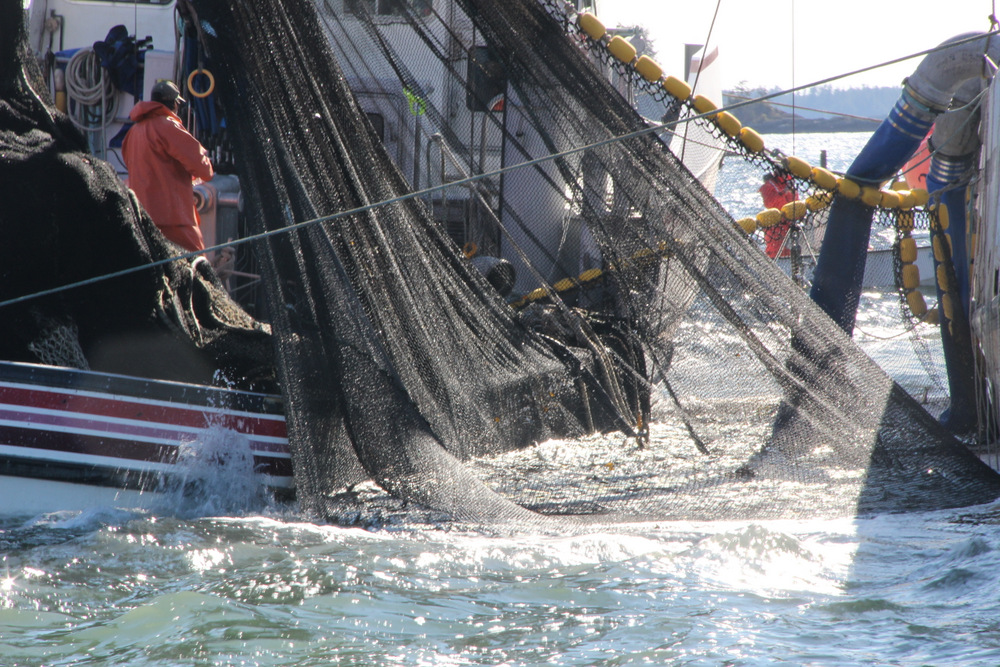
A seiner purses up as a tender pulls alongside to start pumping herring, during the fourth and final opening in the 2014 Sitka Sound sac roe herring fishery. (KCAW photo/Rachel Waldholz)
UPDATED 7:30 p.m., 11/24/14
Sitka’s commercial herring fleet should expect to catch significantly fewer fish this spring.
That’s the news from the Alaska Department of Fish and Game, which released its preliminary harvest level for the 2015 Sitka Sound sac roe herring fishery on Friday (11-21-14).
The preliminary quota is 8,712 tons. That’s low by recent standards — it would be the lowest level since 2003. And it’s about half of last year’s target, which was 16,333 tons.
The herring fleet exceeded that target last year. The 2014 harvest, at 16,957 tons, was one of the largest ever.
Fish and Game biologist Dave Gordon said the lower forecast is driven by the number of three-year-old fish joining the mature, spawning population in Sitka Sound.
“And very few, I mean, almost none, showed up in the fishery last year,” Gordon said. “So, it’s really the lack of recruitment that’s causing the population to contract at this time.”
The department is expecting 44,237 tons of herring to spawn in and around Sitka Sound. That’s the lowest forecast in a decade, and well below the past several years, when forecasts have consistently been above 70,000 tons.
Last year, the department forecast a biomass of 81,663 tons. Later sampling and aerial surveys suggested the actual population was 68,399 tons.
Gordon said the contraction this year could be caused by a wide range of environmental factors.
The herring that turned three in 2014 came out of the 2011 brood year, which was a good one for herring in Sitka Sound.
“That was actually a year of very high spawn deposition,” Gordon said. “We had 78 nautical miles of spawn in Sitka Sound that year. It was the second highest spawn deposition estimate since the department began conducting spawn depositions in the late ’70s. [But] we saw very, very little survival of young herring from that large spawning event.”
That is likely due to ocean conditions, including food availability and water temperatures, he said. But it’s impossible for ADF&G to know the exact cause.
“What exact environmental factors led to the poor survivals, you know, we really can’t put our finger on,” he said.
Critics of the sac roe herring fishery, including the Sitka Tribe of Alaska, worry that the commercial harvest is depleting the herring population.
The sac roe fishery has taken, on average, about 14% of the mature herring in Sitka Sound each year. Gordon said that’s not enough to affect population size. He stressed that this year’s forecast is well within the range of natural variation.
“You know, it’s really not the fishery that’s driving the population down at this time,” he said. “It’s basically getting down to just, poor recruitment trend over the last several years.”
The department will take samples again in late January or early February, and announce the final harvest level in late February or early March.
The sac roe herring fishery usually opens in March.































